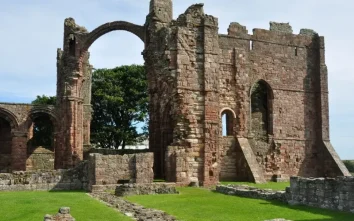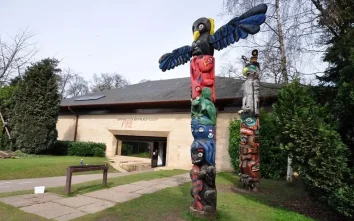Warkworth Castle
Warkworth Castle
- Entry:
- Admission fee
- Facilities: Cafe
- City/Town:
- Warkworth
Museum Shop
Parking
Toilets
- Region:
- the North East
- Postcode:
- NE65 0UJ
- Museum Category:
- Castles
Official Website:
Warkworth Castle
Warkworth Castle: A Monument to Medieval England
From the pages of history to the present, Warkworth Castle has stood as an enduring symbol of England’s tumultuous medieval period. Nestled in the charming village of Warkworth, Northumberland, this imposing yet magnificent ruin is a captivating embodiment of England’s rich architectural heritage and turbulent history.
Historical Overview
Warkworth Castle’s history can be traced back to the late 11th century, not long after the Norman Conquest of England. Initially, the castle was probably a wooden structure, but it was subsequently rebuilt in stone during the 12th century. It is believed that the Percy family, one of the most powerful noble families in northern England during the Middle Ages, had commissioned this significant transformation.
The castle reached its zenith in the 14th century under the stewardship of the 1st Earl of Northumberland, Henry Percy. It was during his reign that the castle saw major expansions and became a significant centre of power in the region. It was also during this period that the imposing keep, a hallmark of Warkworth Castle, was constructed.
Architecture and Layout
Warkworth Castle’s layout is typical of a medieval motte-and-bailey design. The centrepiece of the castle is its remarkably well-preserved keep, built in a unique cross-shaped layout. This structure houses the main living quarters, including a great hall, chapel, kitchen, and chambers, all of which surround a central lightwell.
The castle’s bailey, or courtyard, is enclosed by a formidable curtain wall punctuated with towers. The Lion Tower, notable for its intricate lion carving, stands out among these. The curtain wall, towers, gatehouse, and keep were all designed to provide multiple lines of defense, illustrating the practical and strategic thought that went into medieval castle design.
Noteworthy Historical Events
Warkworth Castle has been a silent witness to several key events in England’s history. It played a crucial role during the Wars of the Roses, serving as a stronghold for the Lancastrians. The castle was also at the heart of the Northern Rebellion against Queen Elizabeth I in the 16th century.
Despite these conflicts, the castle remained a favoured residence of the Percy family until the 17th century. It gradually fell into disuse thereafter, but its historical significance was recognized in the 18th century when it was one of the first castles in England to be preserved for its historical value.
Modern Day and Tourism
Today, Warkworth Castle is managed by English Heritage and is a popular tourist destination. The castle ruins, along with its hermitage — a religious building carved into the rock on the riverbank opposite the castle — serve as potent reminders of the nation’s past and offer a unique opportunity to step back into medieval England.
Visitors can explore the castle’s many rooms, roam the bailey, or simply soak in the breath-taking views of the surrounding countryside from the castle’s battlements. For those seeking a deeper understanding, the on-site museum showcases a range of artefacts discovered during various archaeological excavations and provides a detailed history of the castle and its inhabitants.
Conclusion
Warkworth Castle stands as a potent symbol of England’s medieval past. Despite the ravages of time and the tumult of history, it remains an architectural wonder and a window into a bygone era. Its well-preserved ruins, steeped in history, continue to fascinate visitors from around the world, making it an invaluable part of England’s rich heritage.







